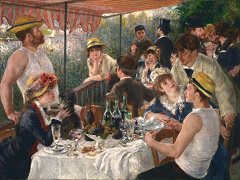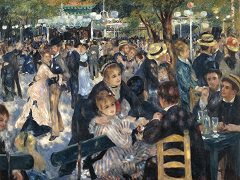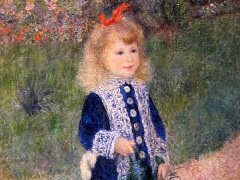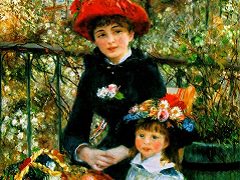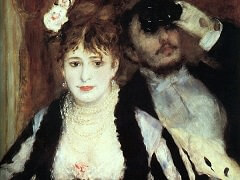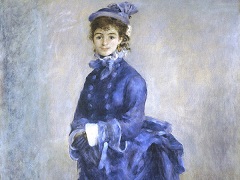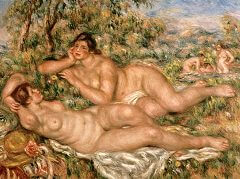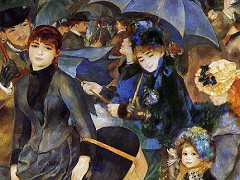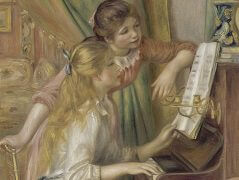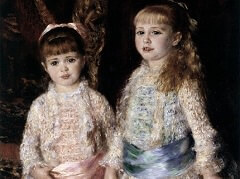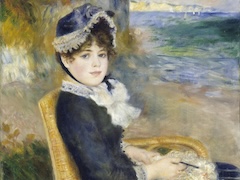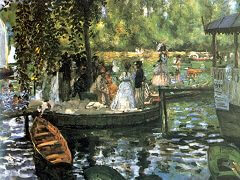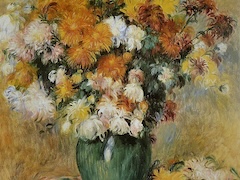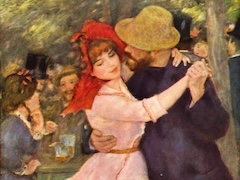The Judgment of Paris - by Pierre-Auguste Renoir
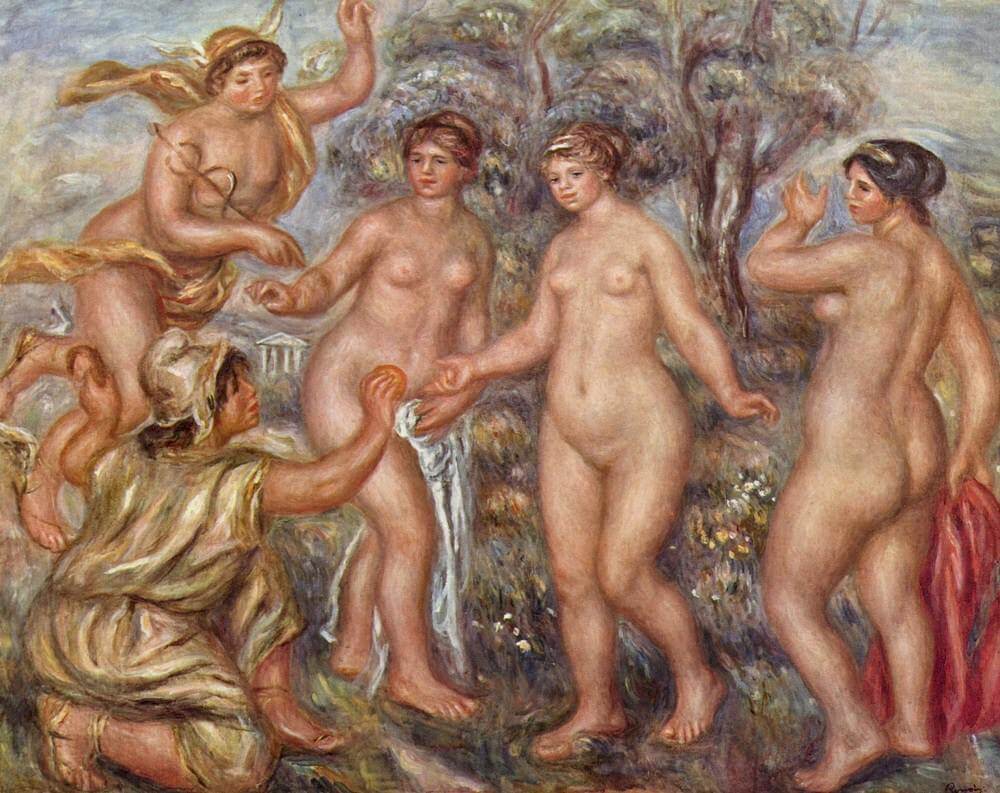
The act portrayed here led to war. The shepherd-prince, Paris, a famed connoisseur of beauty, was called upon to give a golden apple marked "For the Fairest" to the most beautiful of the three competing goddesses, Juno, Minerva, and Venus. As though the sudden appearance before him of three nude goddesses were not enough, each one offered him bribes: power and riches, renown in war, or the fairest of all mortal women as wife. The last was understandably not least, and Paris did not hesitate to accept, at once awarding the golden apple to Venus. The "fairest of all mortal women" turned out to be Helen of Troy, and her subsequent elopement with Paris is what, in mythology, set the Greek and Trojan armies at each other's throats.
Renoir shows us the moment of the bestowal of the apple, as Mercury, at the left, signals the end of the contest.
The picture has a curious, but disarming naivete. Paris, wearing a shepherd's robe and Phrygian bonnet, is Gabrielle, as is the goddess at the right. The landscape is in the Impressionist manner, though it represents a classical scene. The nudes are typical of Renoir's late period in their small-breasted, long-waisted, big-hipped design, statuesque and voluminously modeled, but painted in soft, flowing colors; the faces have nothing of the traditional idealized classic type.
Renoir is untroubled by the fundamental contradictions of subject and style, and indeed, one of the striking things about the picture is the degree of success with which he resolves them into an original unity. He has not fallen into the academic trap of pretending he was more-Greek-than-the-Greeks; it is not the outward appearance of the classical tradition - worn out by centuries of misuse - that has motivated him, but its essential spirit. Thus, without self-consciousness, drawing from his own ever-youthful vitality, Renoir brings new life to the great humanistic tradition.

